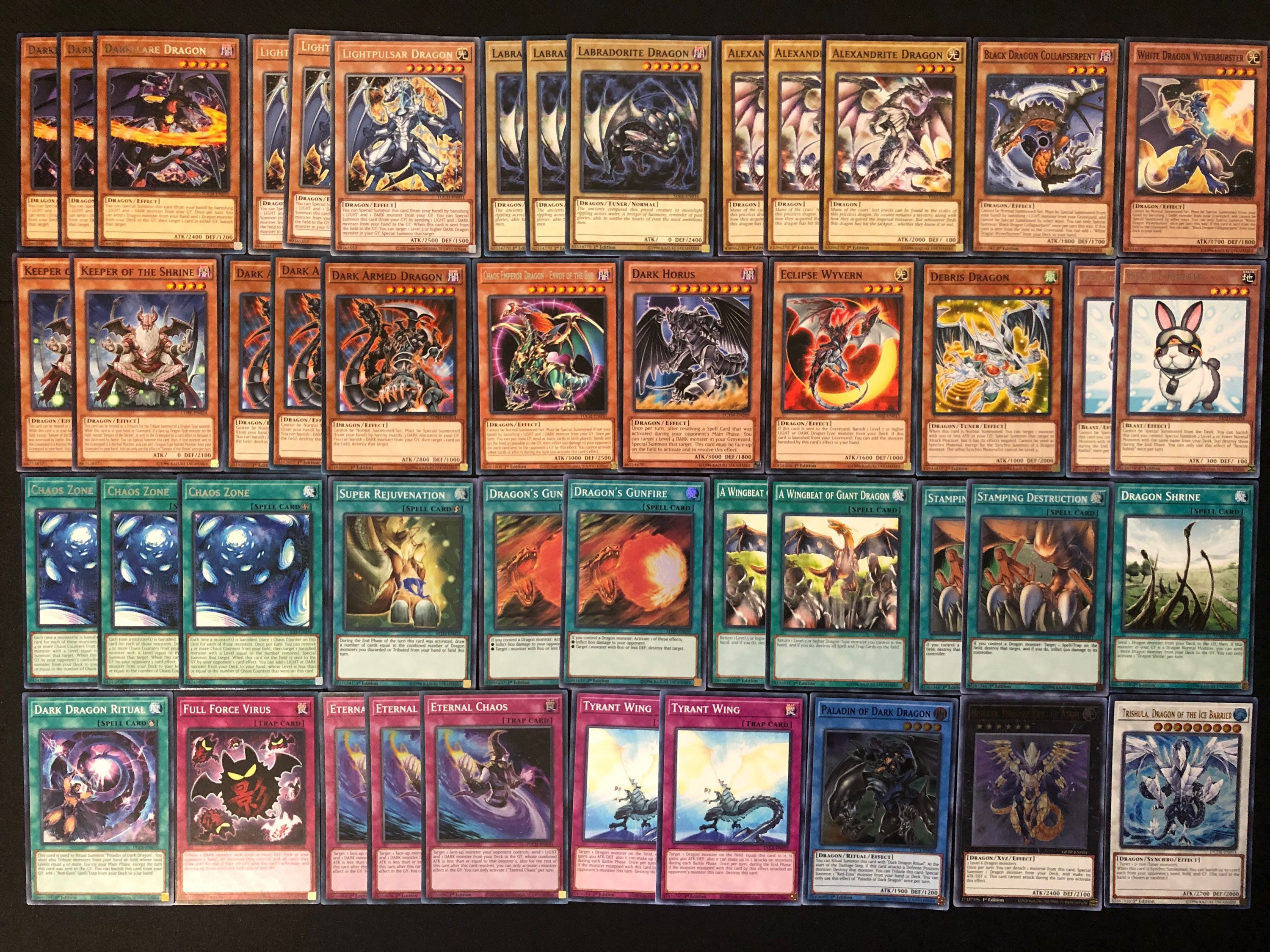Top Performing Chaos Dragon Deck Archetypes (2015)

The year 2015 in the Yu-Gi-Oh! TCG competitive scene saw the rise of several powerful Chaos Dragon decks. While many variations existed, three archetypes consistently demonstrated top-tier performance, dominating regional and national tournaments. Their success stemmed from a potent combination of powerful effects, disruptive strategies, and consistent summoning capabilities. Understanding their strengths and weaknesses is crucial to appreciating the metagame of that era.
Dominant Chaos Dragon Deck Archetypes in 2015
Three main Chaos Dragon deck archetypes emerged as dominant forces in the 2015 Yu-Gi-Oh! TCG competitive landscape. These decks leveraged the power of Chaos Dragons, focusing on powerful effects and disruption to control the game state and secure victory. Their strategies differed in approach, offering diverse gameplay styles.
Comparison of Archetype Strengths, Weaknesses, and Win Conditions, Best chaos dragon deck 2015
The three dominant Chaos Dragon archetypes each had unique strengths and weaknesses, impacting their respective win conditions. Understanding these nuances is key to appreciating their strategic differences and competitive viability.
| Archetype Name | Strengths | Weaknesses | Key Cards |
|---|---|---|---|
| Dark Armed Dragon Control | Powerful disruption with cards like “Dark Hole” and “Raigeki”; consistent summoning of Dark Armed Dragon; strong against beatdown strategies. | Vulnerable to hand traps and graveyard hate; can struggle against decks with strong backrow removal; reliance on specific key cards. | Dark Armed Dragon, Dark Hole, Raigeki, Macro Cosmos, Dimensional Prison |
| Blackwing – Chaos Dragon Hybrid | Excellent swarming capabilities; strong synergy between Blackwing and Chaos Dragon cards; high attack power; ability to control the field. | Can be vulnerable to targeted removal of key monsters; less consistent than pure Dark Armed Dragon strategies; susceptible to floodgates. | Blackwing – Kalut, Blackwing – Bora, Chaos Sorcerer, Black-Winged Dragon, Black Rose Dragon |
| Chaos Dragon – Ritual Beatdown | High attack power; efficient ritual summoning; strong board presence; ability to quickly overwhelm opponents. | Vulnerable to disruption during the ritual summon; less consistent disruption compared to control variants; heavily reliant on specific ritual monsters. | Black Luster Soldier – Envoy of the Beginning, Chaos Emperor, Dragon Master Knight, Premature Burial, Reinforcement of the Army |
Adapting Chaos Dragon Decks to Different Metas (2015): Best Chaos Dragon Deck 2015

The 2015 Yu-Gi-Oh! TCG meta was a dynamic landscape, presenting significant challenges for Chaos Dragon decks. Their inherent strengths, revolving around powerful, destructive plays and disruption, were countered by several prevalent strategies. Adapting required a keen understanding of the meta and strategic deckbuilding to overcome these challenges.
The primary challenge for Chaos Dragon decks stemmed from their vulnerability to disruption and hand traps. Their reliance on specific combos to unleash their power meant that even a single interruption could cripple their game plan. Furthermore, the rise of certain archetypes with powerful negation effects or board control capabilities posed a significant threat. Successfully navigating this meta necessitated proactive deck construction and a thorough understanding of popular opponent strategies.
Counter-Strategies to Popular 2015 Decks
Several popular decks of 2015 presented unique challenges to Chaos Dragon strategies. Addressing these required specific adjustments to deck construction and playstyle. For example, the prevalence of decks focused on strong backrow presence, like those utilizing “Vanity’s Emptiness” or “Gozen Match,” necessitated including cards that could bypass these effects, such as “Dark Hole” or “Raigeki,” or cards that could work around them, like “Super Polymerization” to remove problematic cards from the field.
Modifying Card Choices for Meta Adaptation
The core strategy of a Chaos Dragon deck remained consistent, but the specific card choices within the deck needed adaptation depending on the meta. For example, if the meta was heavily populated by decks utilizing powerful negation effects, adding more disruption cards, such as “Effect Veiler” or “Ghost Ogre & Snow Rabbit,” became crucial. Conversely, if the meta leaned towards swarm strategies, adding more board control cards like “Torrential Tribute” or “Dark Hole” would be a more effective approach. The inclusion of hand traps, like “Vanity’s Fiend” or “Ghost Belle & Haunted Mansion,” could be considered for strong defensive measures.
Deck Construction Modifications for Specific Counter-Decks
The incorporation of specific tech cards, tailored to counter particular prevalent decks, was vital. For instance, facing against decks that relied on graveyard effects necessitated the inclusion of cards like “Macro Cosmos” or “Dimensional Prison” to disrupt their strategies. Similarly, against decks that employed continuous effects to control the game, cards like “Mystical Space Typhoon” or “Twin Twisters” proved invaluable. The choice of these tech cards depended on the specific dominant decks within the prevailing meta, demanding careful analysis and adaptation.
